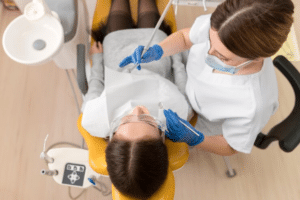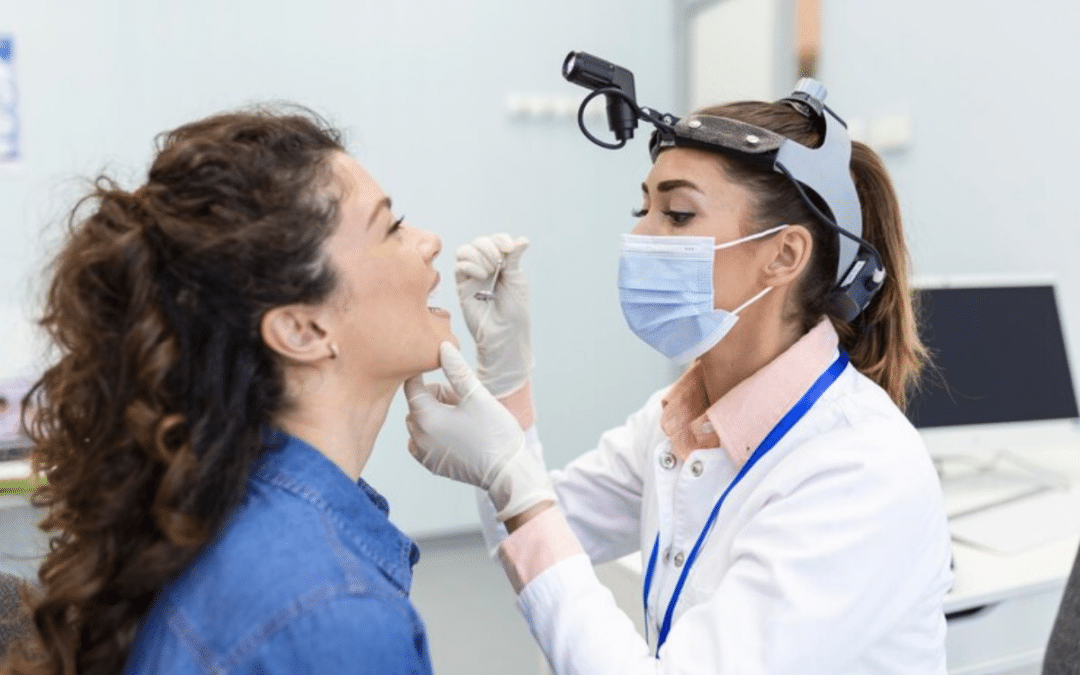In the realm of dental health, one threat often lurks silently, evading detection until it reaches advanced stages: oral cancer. Despite being less discussed than other dental conditions, oral cancer is a serious and potentially life-threatening disease that requires early detection for effective treatment. As April marks Oral Cancer Awareness Month, it’s a fitting time to shed light on the importance of oral cancer screening in preventive dentistry.
Oral cancer encompasses cancers that develop in the mouth and throat, affecting areas such as the lips, tongue, gums, and lining of the cheeks. While the exact cause of oral cancer may vary, certain risk factors, including tobacco use, excessive alcohol consumption, and human papillomavirus (HPV) infection, significantly increase the likelihood of its development.
Early detection of oral cancer is crucial for improving treatment outcomes and increasing the chances of survival. Therefore, understanding the risk factors, recognizing the signs and symptoms, and undergoing regular oral cancer screenings are essential steps in safeguarding one’s oral health and overall well-being.
Risk Factors and Signs of Oral Cancer
Common Risk Factors:
- Tobacco Use: Smoking cigarettes, cigars, or pipes, as well as using smokeless tobacco products, significantly increases the risk of developing oral cancer.
- Excessive Alcohol Consumption: Regularly consuming large amounts of alcohol can irritate the cells in the mouth and throat, increasing the likelihood of cancer development.
- Human Papillomavirus (HPV) Infection: Certain strains of HPV, particularly HPV-16, have been linked to oral cancer.
- Age: Oral cancer is more commonly diagnosed in individuals over the age of 55, although it can occur at any age.
- Sun Exposure: Prolonged exposure to sunlight without protection can lead to lip cancer.
Signs and Symptoms:
- Persistent Mouth Sores: Ulcers or sores that do not heal within two weeks can be a warning sign of oral cancer.
- Red or White Patches: Any unusual patches or discoloration in the mouth, including red or white patches, should be evaluated by a dentist.
- Difficulty Swallowing: Difficulty or pain while swallowing, known as dysphagia, can indicate the presence of a tumor in the throat or esophagus.
- Changes in Speech: Persistent hoarseness or changes in voice quality that do not resolve within a few weeks should be examined.
- Swelling or Lumps: Unexplained lumps, bumps, or swelling in the mouth, throat, or neck should be investigated promptly.
Understanding these risk factors and being vigilant about the signs and symptoms of oral cancer can aid in early detection and prompt treatment, significantly improving the prognosis for individuals affected by this disease. Regular dental check-ups and screenings are essential for maintaining optimal oral health and detecting any abnormalities at the earliest stage possible.

The Role of Preventive Dentistry
Regular visits to the dentist for preventive care play a crucial role in detecting oral cancer at an early stage when it is most treatable. Dentists are trained to recognize the signs and symptoms of oral cancer during routine examinations, allowing for timely intervention if any abnormalities are detected. These preventive dental visits provide an opportunity for thorough oral cancer screening, ensuring comprehensive care for patients’ overall oral health.
Incorporation of Oral Cancer Screening:
Oral cancer screening is typically integrated into routine dental check-ups as part of preventive dentistry practices. During these screenings, dentists examine the mouth, throat, and surrounding tissues for any signs of abnormalities, such as lumps, lesions, or discolorations. Advanced screening tools, such as VELscope and OralID, may also be used to aid in the detection of precancerous or cancerous lesions that may not be visible to the naked eye.
By incorporating oral cancer screening into routine dental check-ups, dentists can identify potential concerns early on, allowing for prompt referral to specialists for further evaluation and treatment if necessary. This proactive approach to preventive dentistry not only helps in the early detection of oral cancer but also contributes to better overall oral health outcomes for patients.
Oral Cancer Screening Process
During an oral cancer screening, the dentist begins by visually examining the oral cavity, including the lips, gums, tongue, inner cheeks, roof of the mouth, and back of the throat. This visual inspection involves looking for any unusual changes in color, texture, or structure of the oral tissues. Additionally, the dentist may palpate or feel around the oral tissues to detect any lumps, bumps, or abnormalities that may indicate the presence of oral cancer.
Use of Advanced Technologies:
In addition to visual and tactile examination, dentists may utilize advanced technologies to enhance the detection of oral cancer. One such technology is VELscope, which emits a special blue light to illuminate oral tissues and highlight any abnormal areas that may be indicative of precancerous or cancerous lesions. Another tool is oral cytology, which involves collecting cells from suspicious areas in the mouth and examining them under a microscope for signs of dysplasia or malignancy. These advanced screening methods aid in the early detection of oral cancer, increasing the chances of successful treatment and improved outcomes for patients.
Benefits of Early Detection
- Early detection of oral cancer significantly improves treatment outcomes by allowing for prompt intervention and management.
- Patients diagnosed at an early stage have higher survival rates compared to those diagnosed at later stages.
- Early-stage oral cancer is typically more responsive to treatment modalities such as surgery, radiation therapy, and chemotherapy, leading to better prognosis and quality of life.
Reduced Need for Aggressive Treatments:
- Early detection may eliminate the need for extensive and aggressive treatments that are often required for advanced-stage oral cancer.
- Patients diagnosed early may undergo less invasive procedures, resulting in reduced treatment-related complications and side effects.
- By identifying oral cancer in its initial stages, dentists can implement less radical treatment approaches, preserving oral function and aesthetics while effectively managing the disease.
Encouraging Regular Screening
Oral cancer screening plays a crucial role in early detection and treatment of the disease, emphasizing the importance of raising awareness among the general population. Educating individuals about the risk factors, signs, and benefits of screening can empower them to take proactive steps towards their oral health. Increased awareness can lead to greater participation in preventive dental visits and screenings, ultimately reducing the burden of oral cancer through early detection and intervention.
Encouragement for Regular Screenings:
Individuals are encouraged to prioritize their oral health by scheduling regular screenings with their dentist. Routine screenings can detect oral cancer in its earliest stages, enhancing the chances of successful treatment and improved outcomes. By incorporating oral cancer screening into routine dental check-ups, individuals can take proactive measures to safeguard their oral health and overall well-being.
Preventive dentistry, including oral cancer screening, serves as a cornerstone of comprehensive healthcare, emphasizing the proactive management of oral health to prevent disease and promote overall well-being. By understanding the risk factors, recognizing the signs, and prioritizing regular screenings during dental visits, individuals can take proactive steps to safeguard their oral health. Early detection through routine screenings not only enhances survival rates but also minimizes the need for aggressive treatments, reducing potential complications.



